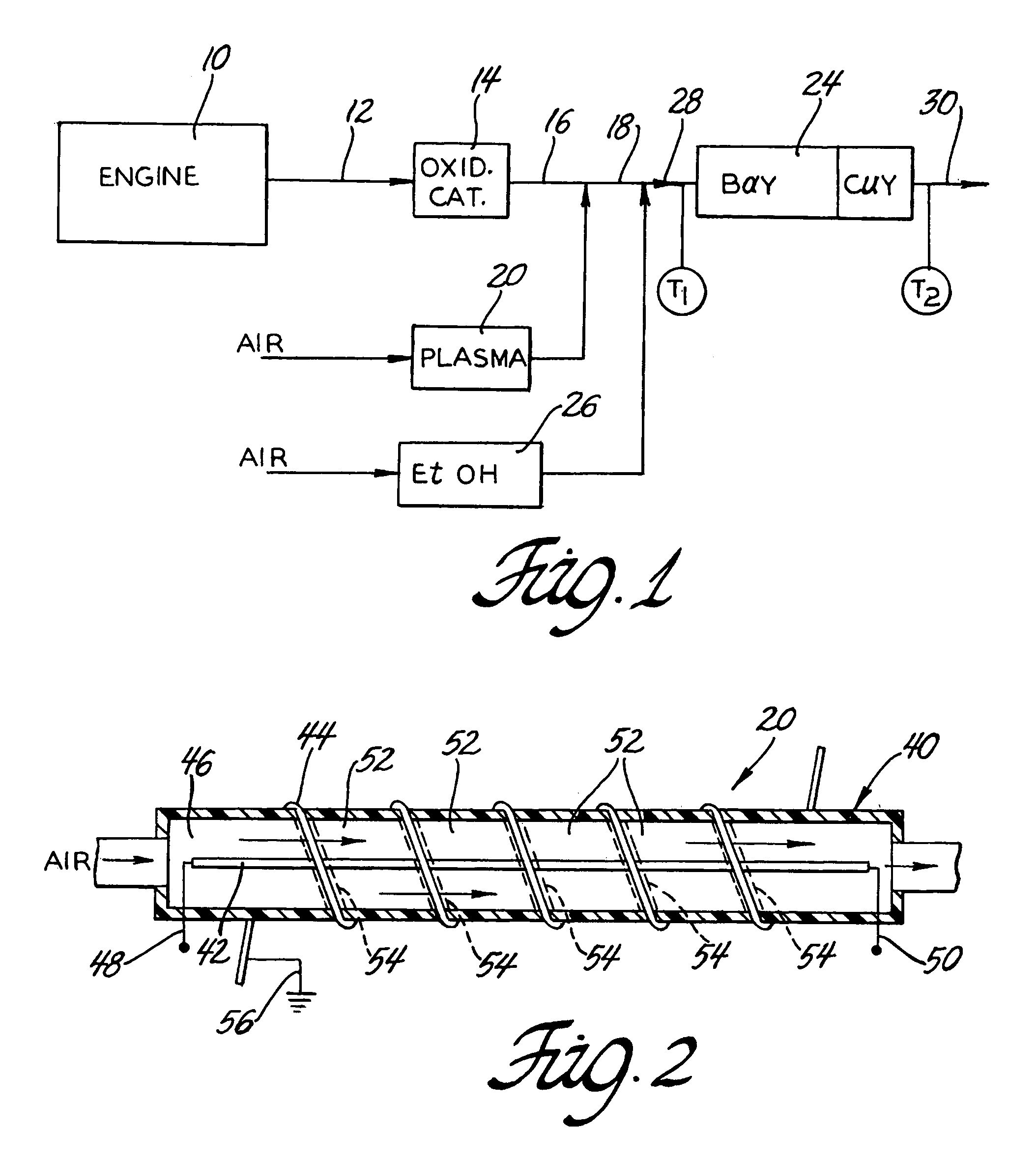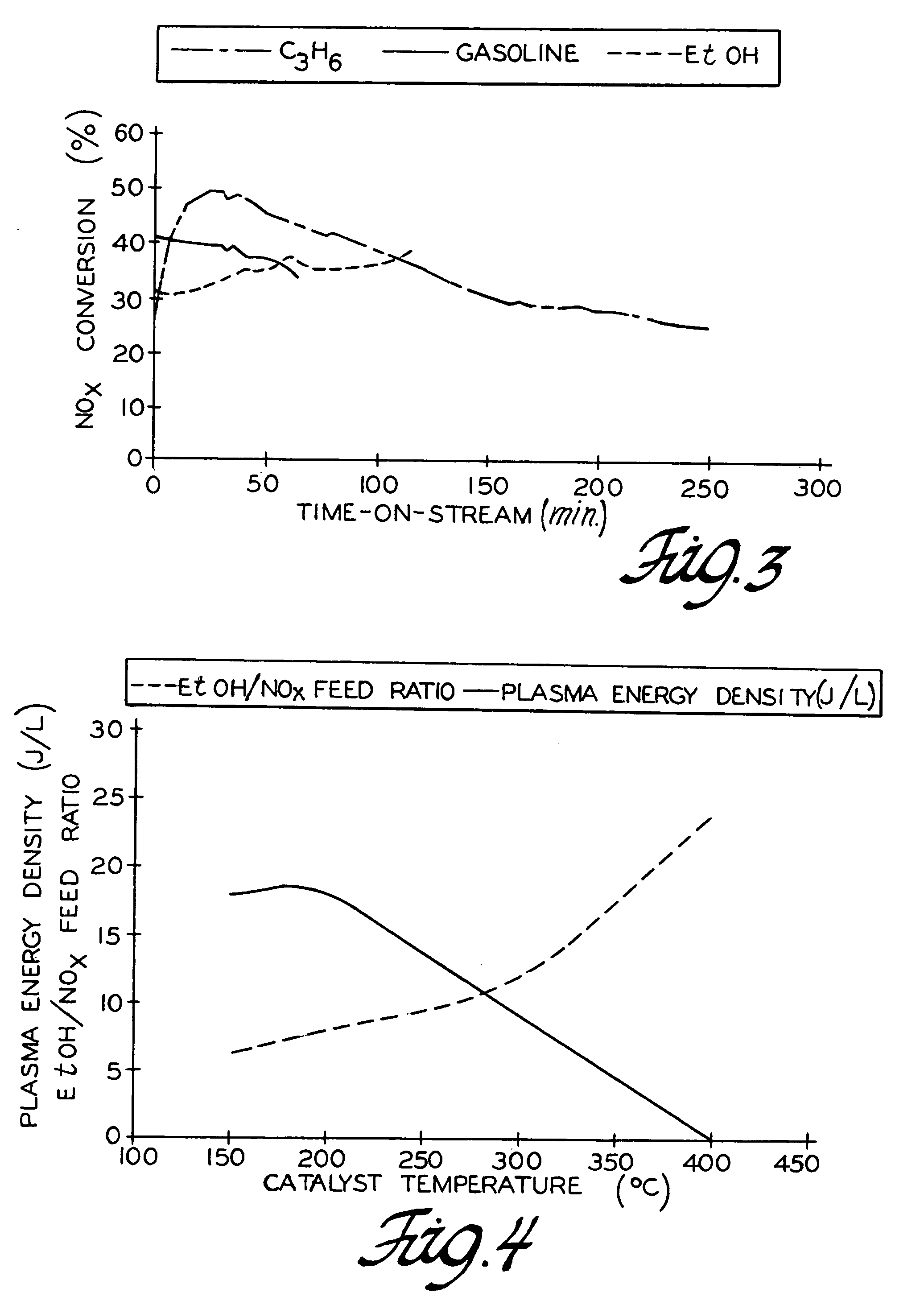Method of reducing NOx in diesel engine exhaust
a technology of diesel engine and nox, which is applied in the direction of machines/engines, separation processes, mechanical equipment, etc., can solve the problems of difficult reduction to nitrogen
- Summary
- Abstract
- Description
- Claims
- Application Information
AI Technical Summary
Benefits of technology
Problems solved by technology
Method used
Image
Examples
Embodiment Construction
[0019]A practice of the invention is illustrated schematically in FIG. 1. Block 10 represents a diesel engine and line 12 represents the flow of the exhaust gas from the diesel engine 10. Diesel engines are typically operated at air to fuel mass ratios that are considerably higher than the stoichiometric ratio of air to fuel and the exhaust gas contains an appreciable amount of unreacted O2 as well as N2 (from the air). The temperature of the exhaust from a warmed-up engine is typically in the range of about 200° C. to about 400° C. The practice of the invention will be illustrated in the case of a diesel engine but it is to be understood that the subject method could be used to treat the exhaust of a lean burn gasoline engine or the exhaust of any hydrocarbon fueled power plant that uses an excess of air to burn the fuel. In diesel engine exhaust, in addition to O2 and N2, the hot gas also contains CO, CO2, H2O and hydrocarbons (some in particulate form) that are not completely bur...
PUM
| Property | Measurement | Unit |
|---|---|---|
| temperature | aaaaa | aaaaa |
| temperatures | aaaaa | aaaaa |
| temperatures | aaaaa | aaaaa |
Abstract
Description
Claims
Application Information
 Login to View More
Login to View More - R&D
- Intellectual Property
- Life Sciences
- Materials
- Tech Scout
- Unparalleled Data Quality
- Higher Quality Content
- 60% Fewer Hallucinations
Browse by: Latest US Patents, China's latest patents, Technical Efficacy Thesaurus, Application Domain, Technology Topic, Popular Technical Reports.
© 2025 PatSnap. All rights reserved.Legal|Privacy policy|Modern Slavery Act Transparency Statement|Sitemap|About US| Contact US: help@patsnap.com



